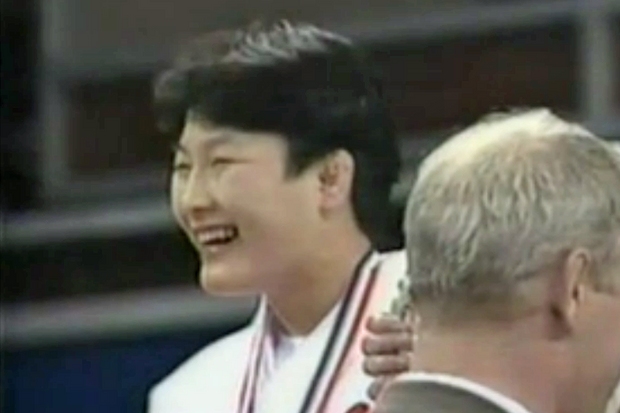
Fumiko Ezaki was seen as a child prodigy. In 1986, she won a World Championships silver medal at the tender age of 15. The following year, in 1987, she won yet another World Championships silver medal. In 1988, when judo was a demonstration sport at the Seoul Olympics, Ezaki won a silver medal there. In 1989, she won yet another World Championships silver medal. At the Tournoi de Paris in 1989 she finished second. A little piece of judo history about Fumiko Ezaki.
Although she seemed to be always the runner-up in major world judo events, it should be noted that at 18 years of age, she had accumulated three World Championships silvers as well as an Olympic silver. That’s no mean feat by any standards.
In 1990, at the age of 19, she finally won a major international gold medal. It was at the Asian Games in Beijing. Her future looked bright. Ezaki looked destined to become a future World and Olympic champion.
But it was not to be. By 1991, her career was already over. A new force in Japanese judo, in the form of Ryoko Tamura (later, Tani), had emerged. Tamura was even more of a prodigy. From 1991 all the way through 2008, there was no chance for any female -48kg player in Japan to represent the country in major international judo events. She was that dominant.
For the next 17 years, no other -48kg player from Japan competed in major international tournaments. Back then, each country could send only one player per category. Nowadays, countries can send up to nine players per gender division. Since there are seven weight categories per gender, that means there are two spare slots. So, if Japan had two -48kg players who are good, they can send both. But back during Tamura’s time, this was not possible. So, it was always Tamura and nobody else for the -48kg category.
Tamura effectively pushed Ezaki into retirement from international competition at the age of 20. Ezaki continued to compete domestically for a few more years. In 1991, she placed second in the Fukuoka Cup. In 1992, she placed third in both the All-Japan Judo Championships for women and the Fukuoka Cup. After that, she no longer competed.
If she had been from another country and had such results, Ezaki might have grown to become a World or Olympic Champion. But she never had that chance because she was born in Japan and had Tamura as a rival.
Today, there is a trend where players who don’t have a chance in their home country (because someone else was ahead of them), would immigrate to another country. In the new rules you even keep your points scored in the World Tour for the other country. There are many examples of that from Europe but there is also one good example from Japan.
After a promising start as a youth, Christa Deguchi was shut out of international competition for about four years. She happened to come of age during the era of Olympic and double World Champion Kaori Matsumoto. By the time Matsumoto retired, Tsukasa Yoshida had taken over as the top -57kg player in Japan.
Deguchi eventually changed nationalities and found success fighting for Canada. In 2019, she became World Champion, defeating none other than Yoshida, who had succeeded Matsumoto.
During Ezaki’s time, country hopping was not done. So, her promising judo career ended just as she was peaking. It’s not clear what happened to Ezaki after she retired from competition.
Read more bespoke judo content at JudoCrazy
